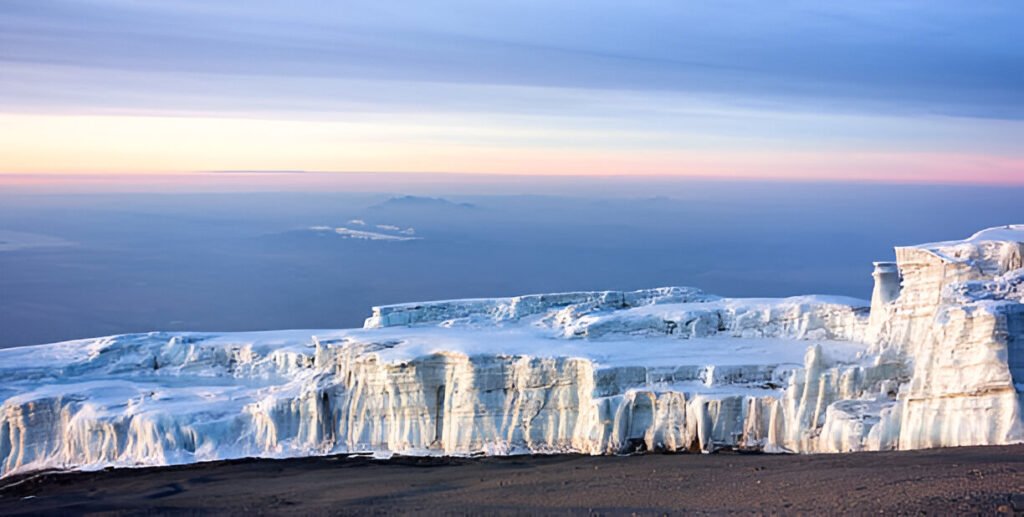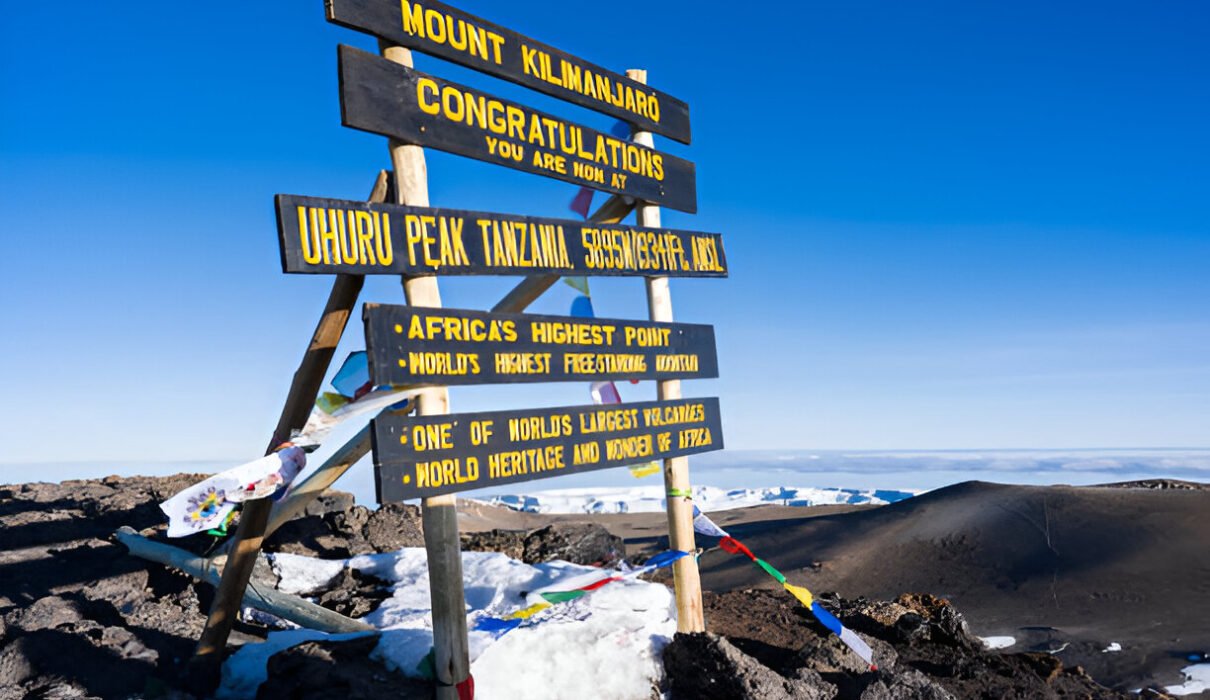
Mount Kilimanjaro, the tallest peak in Africa, offers an unforgettable adventure for climbers, but planning your trek during the rainy season can come with unique challenges and benefits. The rainy season on Kilimanjaro occurs twice a year: the long rains from March to May and the short rains in November. Climbing during this time is not impossible, but it requires proper preparation and flexibility. In this guide, we’ll explore everything you need to know about climbing Mt. Kilimanjaro during the rainy season, from route selection to gear recommendations.
Find expert-guided Kilimanjaro climbs here.
1. Understanding Kilimanjaro’s Rainy Season
Mount Kilimanjaro experiences two distinct rainy seasons:
- Long Rains: From March to May, Kilimanjaro sees heavy rainfall. Trails can be muddy, and visibility may be limited, but this period also means fewer crowds.
- Short Rains: The short rainy season occurs in November. Although rain showers are frequent, they are less intense than the long rains, making it a more favorable option for those willing to take on the challenge.
Learn more about Tanzania’s weather and climate patterns.
2. Pros of Climbing Kilimanjaro During the Rainy Season
Fewer Crowds
One of the biggest advantages of climbing Kilimanjaro during the rainy season is the lack of crowds. Many climbers avoid the mountain at this time, which means you can enjoy a quieter, more peaceful trek with fewer people at campsites and along the trails.
- Benefit: More personal space at camps and on the trail.
- Wildlife: With fewer climbers, there’s a better chance to see wildlife along the way.
Discover the benefits of off-peak travel in Tanzania.
Lower Costs
Climbing Kilimanjaro during the rainy season is often cheaper. Tour operators may offer discounts on packages, and accommodations may have reduced rates due to lower demand.
- Savings: Off-season prices for guides, porters, and accommodations.
- Flight Deals: Airfares to Tanzania may also be lower during this time.
Explore budget-friendly options for Kilimanjaro climbs.
3. Cons of Climbing Kilimanjaro During the Rainy Season
Muddy Trails and Slippery Conditions
The most significant drawback of climbing during the rainy season is the weather. Trails can become muddy and slippery, especially on routes like Machame and Lemosho, which pass through rainforest zones. This makes for more challenging trekking conditions.
- Safety: Slippery paths increase the risk of falls, particularly on steeper routes.
- Slogging: Walking through mud can be exhausting, adding to the physical demands of the climb.
Get tips on dealing with difficult trekking conditions.
Limited Views and Poor Visibility
The rain and fog can obscure the stunning views Kilimanjaro is famous for, especially at lower altitudes. Clouds often cover the landscape, and rainy weather can mean fewer clear days for scenic panoramas and summit views.
- Visibility: Clouds and fog reduce visibility on the mountain.
- Photos: You may miss out on picture-perfect summit moments.
Learn more about weather-related challenges on Kilimanjaro.
4. Best Routes for Climbing in the Rainy Season
Choosing the right route during the rainy season is crucial. Some routes are better suited to wet conditions and offer more sheltered campsites.
Rongai Route
The Rongai Route is an excellent choice for climbing Kilimanjaro during the rainy season. It approaches the mountain from the north and receives much less rainfall compared to routes that start on the southern and western sides. The drier conditions make it easier to trek and minimize the chances of getting bogged down in mud.
- Advantages: Drier and less muddy.
- Scenery: Less affected by rainfall, offering better views.
Explore more about the Rongai Route and its unique features.
Northern Circuit Route
The Northern Circuit is another great option, as it also follows the drier northern side of Kilimanjaro. This route is the longest, allowing plenty of time for acclimatization. Though it’s more expensive, the Northern Circuit provides a less crowded experience even during the rainy season.
- Duration: Takes 8-9 days, allowing for gradual acclimatization.
- Views: Offers panoramic views even during the rainy season.
Learn about the Northern Circuit Route here.
5. Essential Gear for Rainy Season Climbs
Packing the right gear is crucial when climbing Kilimanjaro during the rainy season. Wet weather requires more specialized equipment to keep you dry and comfortable.
Waterproof Clothing
Invest in high-quality waterproof gear, including a rain jacket, rain pants, and a poncho. Look for gear that is breathable but will still protect you from the rain and wind.
- Essential: Waterproof hiking boots, as wet feet can lead to blisters and discomfort.
- Layers: Use moisture-wicking base layers to keep dry under your waterproof clothing.
Find recommendations for waterproof hiking gear.
Dry Bags
To keep your belongings safe from the rain, pack your gear in dry bags or waterproof backpacks. This will ensure that your clothing, sleeping bag, and electronics stay dry throughout the trek.
- Tip: Use zip-lock bags for small items like phones and cameras.
- Sleeping Bag: A waterproof compression sack can help keep your sleeping bag dry.
Check out the best dry bags for wet-weather trekking.
6. Tips for a Successful Rainy Season Climb
Climbing Kilimanjaro in the rainy season requires flexibility and preparation. Here are a few tips to help you succeed:
Stay Dry at Campsites
Keeping your gear dry at campsites is crucial. Use tarps or waterproof covers for your tents, and avoid setting up camp in low-lying areas where water might collect.
- Groundsheet: Ensure your tent has a waterproof groundsheet to prevent moisture from seeping in.
- Camp Drying Areas: Hang clothes and gear inside your tent or under a rainfly to allow them to dry.
Read about staying dry and comfortable on rainy treks.
Take Care of Your Feet
Wet conditions can lead to foot problems, including blisters and fungal infections. Keep your feet dry by using moisture-wicking socks and waterproof boots. Change socks regularly and let your feet air out at campsites.
- Footwear: Gaiters are a great addition to prevent mud and water from entering your boots.
- Foot Care: Carry foot powder to keep your feet dry and comfortable.
Learn more about foot care for long hikes.
7. Advantages of Climbing During Short Rains
Climbing Kilimanjaro during the short rains in November offers a balance between off-season advantages and less intense weather conditions. The short rainy season usually features intermittent rain showers, which means you can still enjoy clear skies and scenic views during parts of your trek.
- Weather: Rain is less persistent than during the long rains, offering a better chance of clear summit views.
- Crowds: There are fewer climbers compared to the busy dry season, but without the heavy rain of March to May.
Find out why the short rains may be ideal for your climb.
8. Mental Preparation and Flexibility
Climbing Kilimanjaro in the rainy season requires mental resilience. You’ll need to be flexible and prepared to deal with unexpected weather changes, which may impact your plans. Keeping a positive mindset and staying focused on your goal will help you push through the challenges.
- Stay Motivated: Remember the stunning summit views and sense of achievement waiting at the top.
- Flexibility: Weather delays or route changes may be necessary, so stay adaptable.
Learn more about the mental challenges of trekking.
Conclusion
Climbing Mount Kilimanjaro during the rainy season is a unique experience that comes with both rewards and challenges. While the weather may not always cooperate, the lack of crowds, lower costs, and stunning scenery make it a worthwhile adventure for those prepared to face the elements. With the right route, gear, and mindset, you can successfully conquer Kilimanjaro even in the rain.
For more information on planning a successful rainy season climb, visit Kilimanjaro Climb Specialist or Eddy Tours & Safaris.

